Printify
The Akhenaten Legacy Mug: Father of Monotheism | Ancient Egypt History
The Akhenaten Legacy Mug: Father of Monotheism | Ancient Egypt History
Couldn't load pickup availability
Product Description
Elevate your daily ritual with a connection to history's most revolutionary pharaoh. This striking ceramic coffee mug features a powerful image of Pharaoh Akhenaten, a figure who fundamentally transformed ancient Egypt with his unprecedented religious reforms. More than just a mug, it's a statement piece celebrating the profound intellectual courage and spiritual vision of an African leader who dared to challenge 2,000 years of religious tradition and reimagine humanity's relationship with divinity.
Akhenaten: The Revolutionary Pharaoh Who Changed Everything
Akhenaten, who ruled during Dynasty XVIII (c. 1353–1336 BCE), was unlike any pharaoh before or after him. Born as Amenhotep IV in Thebes, he was not only the husband of the legendary Queen Nefertiti—one of history's most beautiful and powerful women—but also the father of the renowned King Tutankhamun (King Tut). Yet his most enduring legacy transcends family connections: Akhenaten is recognized as the Father of Monotheism, the first ruler in recorded history to attempt establishing belief in one supreme god.
This wasn't a minor theological adjustment—it was a complete revolutionary upheaval of Egyptian religion, politics, economy, art, and culture. Akhenaten didn't just promote a new god; he attempted to erase thousands of years of religious tradition, dismantle the powerful priesthood, redirect massive economic resources, relocate the capital city, and fundamentally reimagine what it meant to be Egyptian. His radical vision would shake the foundations of one of the ancient world's most stable civilizations.
- Born Amenhotep IV: Named after his father Amenhotep III and the god Amun, Egypt's most powerful deity
- Changed his name to Akhenaten: Meaning "Effective for the Aten" or "Living Spirit of Aten"—rejecting Amun in his very identity
- Revolutionary monotheism: Promoted exclusive worship of the Aten (sun disk) as the one true god
- Closed traditional temples: Shut down temples to Amun-Ra and other gods throughout Egypt
- Disbanded the priesthood: Challenged the political and economic power of Amun-Ra's wealthy priests
- Built a new capital: Founded Akhetaten (modern Amarna), a city dedicated entirely to Aten worship
- Artistic revolution: Introduced radical new artistic style showing him with elongated features and androgynous appearance
- Family-centered theology: Depicted intimate family scenes with Nefertiti and their children—unprecedented in royal art
Akhenaten represents one of history's most audacious intellectual and spiritual experiments—an African ruler willing to risk everything for his theological vision, challenging millennia of tradition and confronting the most powerful religious establishment in the ancient world.
The Aten: From Solar Disk to Supreme Deity
The Aten—the solar disk itself, the physical sun—had been worshipped as one aspect of the sun god Ra for centuries. But Akhenaten elevated the Aten to something unprecedented: the sole deity, the only god worthy of worship, the creator of all existence. This wasn't just promoting a favorite god—it was declaring all other gods false or irrelevant:
- Physical manifestation: The Aten was represented as the sun disk with rays ending in hands, giving life and blessings
- Life-giving power: The sun as the source of all life, warmth, growth, and existence on Earth
- Universal creator: The Aten created not just Egypt but all lands, all peoples, all languages, all life everywhere
- Accessible divinity: Unlike hidden gods in temple sanctuaries, the Aten was visible to everyone in the sky
- Direct relationship: Akhenaten claimed to be the sole intermediary between humanity and the Aten
- Exclusive worship: No other gods allowed—a radical departure from Egypt's polytheistic tolerance
- Abstract deity: The Aten had no mythology, no stories, no anthropomorphic form beyond the sun disk
- Universal god: The Aten ruled over all creation equally, not just Egypt—a revolutionary theological concept
The theological sophistication here is remarkable: an African ruler conceptualizing a single, universal, abstract deity over 3,300 years ago—centuries before biblical monotheism developed in its recognizable form. This wasn't primitive sun worship; it was sophisticated theology about the nature of divinity, creation, and humanity's relationship with the divine.
The Great Hymn to the Aten: Ancient Africa's Monotheistic Poetry
Akhenaten himself composed (or commissioned) The Great Hymn to the Aten, one of the most beautiful religious texts from the ancient world. This poetic masterpiece celebrates the Aten's universal creative power and bears striking similarities to Psalm 104 in the Hebrew Bible—leading scholars to suggest direct influence:
- Creation of all life: The Aten brings forth all creatures, plants, animals, and humans
- Universal provision: The sun provides for all lands, peoples, and languages—not just Egypt
- Day and night cycles: When the Aten sets, the world sleeps; when it rises, creation awakens
- Diversity in unity: The Aten creates different languages, appearances, and lands but rules over all equally
- Life-giving rays: The sun's rays literally give life, described with poetic beauty
- Profound theology: Expresses sophisticated understanding of divinity, creation, and universal divine care
- Biblical parallels: Psalm 104 shares remarkable similarities in structure, themes, and imagery
That an African pharaoh composed profound monotheistic poetry over 1,300 years before Jesus challenges narratives about where sophisticated theology originated. This wasn't primitive religion—it was advanced theological thinking expressed in beautiful literature.
Akhetaten: The City of the Horizon of the Aten
Akhenaten's most enduring physical legacy is Akhetaten (modern Amarna), the revolutionary new capital he built from scratch in Middle Egypt. This wasn't just moving the government—it was creating a utopian city dedicated entirely to his religious vision, free from the influence of Thebes and the Amun-Ra priesthood:
- Virgin territory: Built on previously uninhabited desert land, with no connection to traditional religious sites
- Rapid construction: The entire city built in just a few years—a massive undertaking requiring thousands of workers
- Planned city: Carefully designed with temples, palaces, administrative buildings, and residential districts
- Open-air temples: Unlike traditional dark temple interiors, Aten temples were open to the sun's rays
- Royal residence: Akhenaten, Nefertiti, and their six daughters lived in grand palaces overlooking the city
- Artistic workshops: Created the revolutionary Amarna art style showing realistic, intimate family scenes
- Complete abandonment: After Akhenaten's death, the city was quickly abandoned and never reoccupied
- Archaeological treasure: Because it was abandoned so quickly, Amarna preserves a unique snapshot of this revolutionary period
The archaeological site of Amarna today provides invaluable insights into daily life, art, religion, and politics during this revolutionary period—a time capsule of ancient African innovation and religious experimentation.
The Amarna Royal Family: Power, Beauty, and Revolution
Akhenaten's revolution was a family affair, with his wife Nefertiti and their daughters playing unprecedented public roles in religious and political life. The Amarna art revolution depicted intimate family scenes never before shown in royal Egyptian art:
- Queen Nefertiti: Co-regent and possibly equal ruler, depicted with power and authority unusual for queens
- Beautiful family: Akhenaten, Nefertiti, and their six daughters shown in loving, intimate family scenes
- Revolutionary art: Royal family shown kissing, embracing, playing with children—humanizing the divine pharaoh
- Nefertiti's power: Depicted performing religious rituals and smiting enemies—roles usually reserved for pharaohs
- King Tutankhamun: Akhenaten's son (by a secondary wife) who would later restore traditional religion
- Daughters as priestesses: The six princesses actively participated in Aten worship and temple ceremonies
- Physical features: Artistic style showing elongated heads, full lips, narrow waists—whether realistic or symbolic remains debated
- Religious centrality: The royal family positioned as essential intermediaries between humanity and the Aten
This family-centered theology and intimate artistic representation was revolutionary—making the divine royal family seem more human and accessible while simultaneously elevating them as the only conduits to the divine Aten.
Why Did Akhenaten's Revolution Fail?
Despite his absolute power as pharaoh, Akhenaten's religious revolution completely failed and was systematically erased after his death. Understanding why reveals the complexity of ancient Egyptian civilization and the limits of even absolute royal power:
- Too radical, too fast: Attempting to overturn 2,000+ years of religious tradition in just one generation
- Economic disruption: Closing temples disrupted the economy—temples were major landowners and employers
- Priestly opposition: The powerful Amun-Ra priesthood had immense wealth and influence to lose
- Popular resistance: Common people remained attached to traditional gods and religious practices
- Political alienation: Akhenaten's focus on religion neglected foreign policy and military matters
- Loss of empire: Egypt's Near Eastern empire began crumbling due to lack of military attention
- No institutional support: The revolution depended entirely on Akhenaten personally—no institutional foundation
- Lack of succession: His successors lacked his conviction and faced enormous pressure to restore traditional religion
- Cultural rejection: Egyptians identified deeply with their traditional gods, myths, and religious practices
After Akhenaten's death, his son Tutankhaten changed his name to Tutankhamun (restoring Amun), moved the capital back to Thebes, reopened the temples, and restored traditional religion. Akhenaten was condemned as a heretic, his name erased from king lists, his city abandoned, and his monuments destroyed. It was as if the Amarna revolution had never happened—except archaeology has now recovered his story.
Akhenaten's Legacy: The First Monotheist?
Akhenaten's greatest legacy is his role as possibly the first true monotheist in recorded history—the first ruler to promote belief in one supreme god to the exclusion of all others. This raises profound questions about the origins of monotheism and African contributions to world religion:
- Predates biblical monotheism: Akhenaten's reforms occurred centuries before recognizable Jewish monotheism developed
- Possible influence on Moses: Some scholars speculate Moses (if historical) may have been influenced by Atenism
- Great Hymn parallels: Striking similarities between the Hymn to the Aten and Psalm 104 suggest direct influence
- African theological innovation: Demonstrates that sophisticated monotheistic thinking emerged in Africa
- Universal deity concept: The Aten as creator of all peoples and lands—not just a tribal or national god
- Abstract divinity: Moving toward more abstract, philosophical concepts of God rather than anthropomorphic deities
- Failed experiment: Shows that even powerful religious innovations can fail without cultural support
- Historical importance: Regardless of direct influence, represents crucial moment in human theological development
Whether or not Akhenaten directly influenced later monotheistic religions, his theological revolution demonstrates that sophisticated monotheistic thinking emerged from African minds in Kemet—challenging narratives that portray monotheism as exclusively a Near Eastern or Western development.
Coffee's African Origins: Sipping Ethiopian Innovation
As you connect with Akhenaten's profound revolutionary spirit through your morning beverage, remember another vital piece of African history that fuels your day: the origin of coffee itself. Just as Akhenaten brought revolutionary change to Egypt, coffee brought revolutionary transformation to global culture—and both began in Africa.
Long before the cafés of Paris or espresso in Italy, coffee started in Ethiopia—the only place on Earth where coffee grows wild naturally. Africans were the original innovators, discovering the energizing properties of coffee cherries and brewing roasted beans into powerful energy drinks that would eventually transform global society, commerce, and culture.
- Ethiopian discovery: Coffee cultivation and consumption began in the Ethiopian highlands through African agricultural innovation
- Kaldi's legend: The Ethiopian goat herder who noticed his goats became energized after eating coffee cherries
- African processing: Roasting, grinding, and brewing techniques developed by African communities
- Spiritual use: Ethiopian monks used coffee to stay awake during long prayer sessions
- Moorish transmission: Black Muslim scholars and traders (the Moors) carried coffee from North Africa into Spain and Europe
- The Moorish Golden Age: Along with coffee, Moors brought universities, vast libraries, advanced mathematics (algebra), sophisticated medicine, astronomy, architecture, and basic hygiene (including soap and bathing) to medieval Europe
- Cultural transformation: Coffee houses became centers of intellectual exchange, political discourse, and social connection
- Economic impact: Coffee became one of the most traded commodities globally, driving economies worldwide
- Hidden heritage: Mainstream history erases African origins of coffee and countless other innovations
This isn't just about coffee—it's about how African legacy continues to fuel the modern world, often without proper recognition or credit. Every coffee you drink connects you to African ingenuity and innovation. Your morning cup becomes a literal sip of Black brilliance, connecting you to a lineage of invention, culture, and profound impact that reshaped global traditions and continues powering civilization today.
The Moors: Black Scholars Who Civilized Europe
Just as Akhenaten attempted to revolutionize Egyptian civilization, the Moors—Black Muslim scholars from North Africa—revolutionized European civilization when they invaded Spain in 711 CE and brought enlightenment to a continent mired in the Dark Ages:
- Universities and libraries: Established centers of learning when most Europeans were illiterate
- Advanced mathematics: Introduced algebra, algorithms, and Arabic numerals to replace clunky Roman numerals
- Sophisticated medicine: Performed surgeries, developed pharmaceuticals, and established hospitals
- Architectural marvels: Built stunning palaces, mosques, and infrastructure (like the Alhambra) still admired today
- Hygiene revolution: Introduced bathing, soap, perfumes, and public baths to filthy medieval Europe
- Agricultural innovation: Advanced irrigation systems, crop rotation, and farming techniques
- Philosophy and science: Preserved and advanced Greek knowledge that Europe had lost or destroyed
- 800-year rule: The Moors ruled Spain from 711-1492, making it the most advanced place in Europe
When the Moors were finally expelled in 1492, Spain descended back into ignorance, superstition, and the horrors of the Spanish Inquisition. Yet mainstream history barely mentions the Moors, and when it does, their African identity is hidden or minimized—deliberate erasure designed to maintain the false narrative that Europe civilized the world, when the truth is Africa civilized Europe.
Why This Mug Matters: Celebrating Revolutionary Courage
This mug serves as daily celebration of revolutionary thinking, intellectual courage, and the willingness to challenge established power. Every morning, as you drink coffee—an African innovation—from a mug celebrating Akhenaten—an African revolutionary—you connect to themes of transformation and courage:
- Revolutionary spirit: Honor leaders who dare to challenge tradition and imagine new possibilities
- Intellectual courage: Recognize the bravery required to promote radical new ideas against powerful opposition
- African innovation: Celebrate that revolutionary theological thinking emerged from African minds
- Complex history: Understand that ancient Egypt was sophisticated, complex, and full of dramatic changes
- Religious evolution: Appreciate how religious ideas develop, evolve, and influence each other across cultures
- Failed experiments matter: Even revolutions that fail can influence future developments in profound ways
- Question narratives: Challenge simplistic stories about where monotheism and sophisticated theology originated
- Educational tool: Share Akhenaten's fascinating story with family, friends, and especially young people
Perfect For: History Lovers and Revolutionary Thinkers
This unique mug is more than just drinkware; it's a statement piece, a conversation starter, and a daily reminder of revolutionary African courage and intellectual innovation. Perfect for:
- History enthusiasts: Especially those passionate about ancient Egypt, religious history, and revolutionary periods
- Egyptology lovers: Students and scholars of ancient Egypt, the Amarna period, and pharaonic civilization
- Religious scholars: People interested in the history and development of monotheism and world religions
- Revolutionary thinkers: Anyone who admires leaders willing to challenge tradition and imagine new possibilities
- Afrocentric scholars: Committed to reclaiming and celebrating African contributions to religious and philosophical thought
- Coffee lovers: Who appreciate the African origins of their daily brew and want meaningful drinkware
- Art appreciators: Fans of the revolutionary Amarna art style and its unique aesthetic
- Gift givers: Looking for thought-provoking, historically significant, and intellectually stimulating presents
- Museum visitors: Who've been inspired by Amarna period exhibits and want to bring that connection home
- Educators: Teachers of world history, religious studies, or ancient civilizations
Ideal Gift Occasions
- Black History Month: Celebrate African contributions to religious and philosophical thought
- Religious holidays: For people interested in the historical development of monotheism
- Graduation gifts: Inspire graduates with examples of revolutionary thinking and intellectual courage
- Birthday presents: For anyone who loves Egyptian history, religious studies, or revolutionary figures
- Holiday gifts: Hanukkah, Christmas, Kwanzaa—celebrating heritage and intellectual traditions
- Teacher appreciation: For educators teaching about world religions, ancient history, or revolutionary movements
- Book club gifts: For groups reading about ancient Egypt, religious history, or the Amarna period
- Museum gift shop alternative: More meaningful than typical tourist items with deeper educational content
- Encouragement gifts: Support someone pursuing revolutionary ideas or challenging established norms
- Self-gift: Invest in daily inspiration and connection to revolutionary African heritage
The Amarna Art Revolution: Beauty in New Forms
Akhenaten's revolution extended beyond religion to fundamentally transform Egyptian art. The Amarna art style broke with 2,000 years of artistic convention, creating a unique aesthetic that still captivates viewers today:
- Realistic portraiture: Akhenaten shown with elongated head, full lips, narrow waist, wide hips—whether realistic or symbolic remains debated
- Intimate family scenes: Royal family shown kissing, embracing, playing with children—unprecedented in formal royal art
- Humanized royalty: The divine pharaoh depicted in everyday domestic scenes, making him seem more human
- Nefertiti's beauty: The famous bust of Nefertiti from this period remains one of antiquity's most beautiful artworks
- Exaggerated features: Distinctive artistic style showing unusual body proportions and facial features
- Religious focus: Aten depicted as sun disk with rays ending in hands, blessing the royal family
- Naturalistic details: Plants, animals, and daily life shown with greater realism than traditional formal art
- Short-lived style: After Akhenaten's death, traditional artistic conventions were quickly restored
The Amarna art style demonstrates that Akhenaten's revolution wasn't just theological—it was a complete reimagining of Egyptian culture, aesthetics, and self-representation.
Modern Relevance: Revolutionary Courage in Any Era
Akhenaten's story carries urgent relevance for anyone pursuing revolutionary ideas or challenging established power:
- Courage to challenge tradition: Sometimes progress requires questioning long-established beliefs and practices
- Power of ideas: Even failed revolutions can influence future developments in profound ways
- Limits of authority: Even absolute power cannot force cultural change without popular support
- Importance of timing: Revolutionary ideas need the right historical moment to succeed
- Institutional support matters: Changes that depend entirely on one person rarely survive their death
- Cultural resilience: People maintain deep attachments to tradition even under pressure to change
- African intellectual tradition: Revolutionary thinking about religion, politics, and society has deep African roots
- Complexity of history: Ancient civilizations were dynamic, changing, full of conflict and innovation—not static or primitive
Premium Quality for Daily Use
This isn't just a meaningful historical connection—it's a high-quality mug built for daily use:
- Two size options: Choose 11oz for standard servings or 15oz for those who need extra fuel
- Vibrant, crisp colors: High-quality printing ensures Akhenaten's powerful image remains bold and striking
- White ceramic with colored interior: Beautiful two-tone design adds visual appeal
- Microwave-safe: Convenient reheating without transferring to another container
- Dishwasher-safe: Easy cleaning for busy lifestyles—top rack recommended
- Durable construction: Quality ceramic withstands daily use without fading or chipping
- Comfortable handle: Ergonomic design for secure grip during morning routines
- Professional printing: Fade-resistant colors maintain vibrancy through countless washes
Start Your Day with Revolutionary Spirit
Imagine beginning each morning with visual connection to history's most revolutionary pharaoh—a leader who dared to reimagine religion, society, and culture itself. As you pour your coffee (an Ethiopian innovation carried to the world by African Moors), you connect to multiple layers of African brilliance and revolutionary courage:
- The intellectual courage to challenge millennia of religious tradition
- The theological sophistication that conceptualized monotheism 3,300 years ago
- The artistic revolution that reimagined Egyptian aesthetics and representation
- The architectural vision that built an entire city dedicated to a new spiritual ideal
- The Ethiopian discovery of coffee that energizes modern civilization
- The Moorish scholars who brought enlightenment to medieval Europe
- Your own power to think differently and challenge established norms
This daily ritual becomes more than caffeine—it's intellectual inspiration, historical connection, and revolutionary courage combined into one powerful morning moment.
Conversations This Mug Sparks
The striking image of Akhenaten naturally inspires meaningful discussions:
- "Who is Akhenaten and why was he so revolutionary?"
- "Did he really invent monotheism?"
- "Tell me about Queen Nefertiti and their family"
- "Why did his religious revolution fail?"
- "Is there a connection between Atenism and Judaism?"
- "Coffee comes from Ethiopia? I never learned that"
- "The Moors brought civilization to Europe? They never taught us that in school"
- "This makes me want to learn more about the Amarna period"
- "I want to visit the archaeological site of Amarna"
Each conversation becomes an opportunity to educate, inspire curiosity, and share truth about African contributions to religious and intellectual history.
Product Specifications
- Sizes available: 11oz (standard) and 15oz (large) to suit your beverage needs
- Material: High-quality white ceramic with colored interior
- Design: Features striking image of Pharaoh Akhenaten in vibrant, fade-resistant colors
- Microwave-safe: Convenient reheating without transferring beverages
- Dishwasher-safe: Easy maintenance—top rack recommended for longevity
- Print quality: Professional-grade printing ensures lasting clarity and color vibrancy
- Handle: Comfortable, ergonomic design for secure grip
- Durability: Built for daily use without fading, chipping, or deterioration
Care Instructions
- Dishwasher cleaning: Place on top rack for optimal care and longevity
- Hand washing: Use warm water and dish soap for gentler cleaning option
- Microwave use: Safe for reheating beverages—avoid overheating empty mug
- Avoid abrasives: Don't use steel wool or harsh scrubbing pads that could damage design
- Storage: Store in dry location to prevent moisture damage
- First use: Wash before first use to ensure cleanliness
Supporting Black-Owned Business and Historical Truth
At Hotep Creations, we create products that celebrate authentic African history, challenge false narratives, and honor revolutionary African leaders. This Akhenaten mug represents our commitment to:
- Preserving and promoting African contributions to religious and philosophical thought
- Challenging narratives that erase African innovation in theology and monotheism
- Creating daily touchpoints for historical connection and intellectual inspiration
- Honoring revolutionary leaders who dared to reimagine civilization itself
- Connecting modern life to African innovations like coffee
- Supporting Black economic empowerment through entrepreneurship
- Providing educational tools about complex and fascinating periods of ancient history
Every purchase supports a Black-owned business dedicated to education, cultural affirmation, and truth-telling about African contributions to human civilization.
More Than a Mug: A Daily Revolutionary Practice
This mug transforms your morning coffee ritual into a daily practice of revolutionary thinking and intellectual courage:
- Connect with leaders who dared to challenge powerful traditions and institutions
- Recognize the intellectual courage required to promote revolutionary ideas
- Appreciate that sophisticated theological thinking emerged from African minds
- Understand that even failed revolutions can influence future developments
- Honor the complexity and dynamism of ancient African civilizations
- Remember that African innovations (like coffee) continue fueling modern life
- Challenge your own assumptions about where revolutionary ideas originate
- Start each day inspired by ancestral courage and intellectual innovation
Because Revolutionary Thinking Has Always Been African
They can erase Akhenaten's name from history. They can destroy his monuments. They can abandon his city. They can condemn him as a heretic. They can minimize African contributions to religious thought.
But they cannot erase the truth.
An African pharaoh promoted monotheism 3,300 years ago. African minds composed beautiful theological poetry. African workers built an entire city dedicated to revolutionary religious ideals. African artists reimagined aesthetic traditions. Revolutionary theological and intellectual innovation emerged from Africa—regardless of whether later traditions acknowledged their debt.
This mug is your daily declaration that you recognize revolutionary African courage, that you honor intellectual innovation from African minds, and that you reject narratives that dismiss African contributions to human thought.
As you sip coffee—an African gift—while contemplating Akhenaten's image—an African revolutionary—you participate in the ongoing work of historical reclamation, intellectual recognition, and cultural affirmation.
Your ancestors dared to reimagine civilization. They challenged powerful traditions. They composed beautiful theology. They built revolutionary cities. And you carry that same revolutionary courage in your DNA.
Honor Akhenaten's revolutionary legacy. Celebrate Ethiopian coffee heritage. Start your day inspired by African intellectual courage. Add this powerful mug to your cart and sip from the wellspring of monotheistic thought every morning.
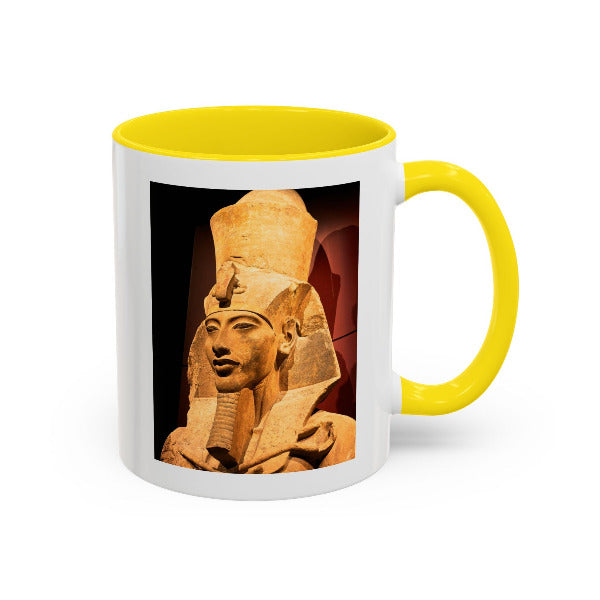





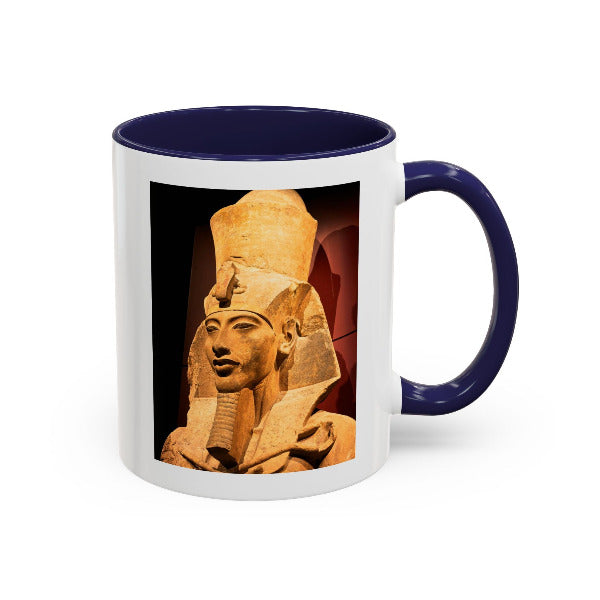





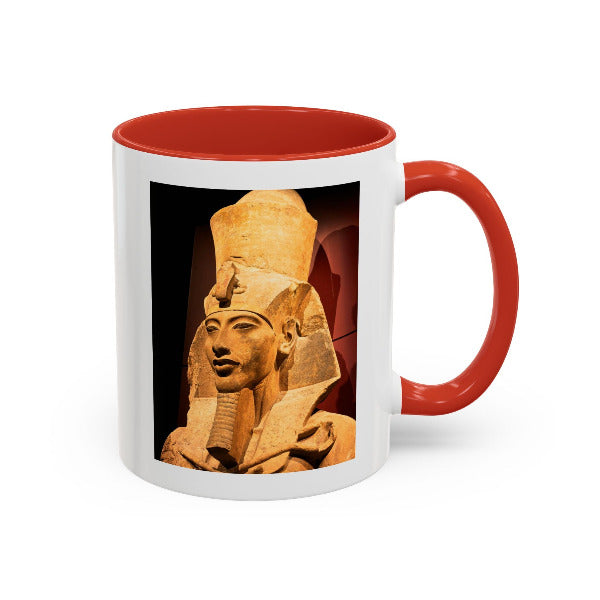


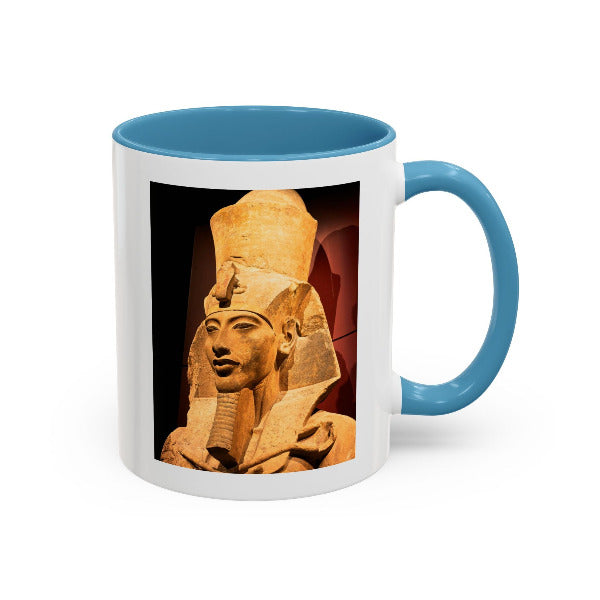


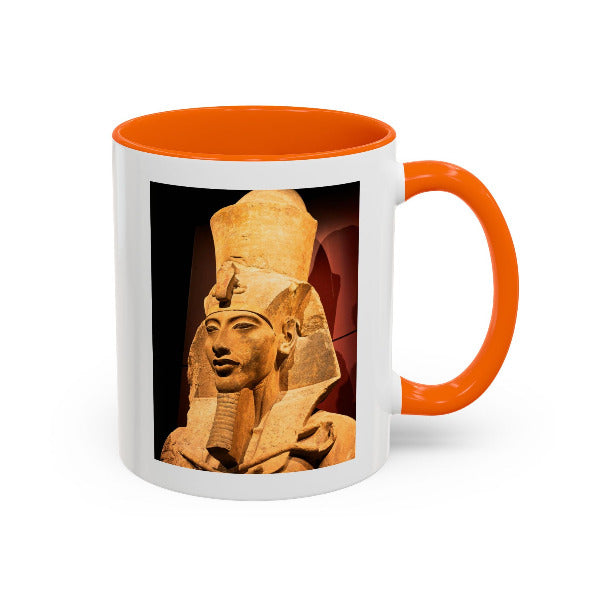


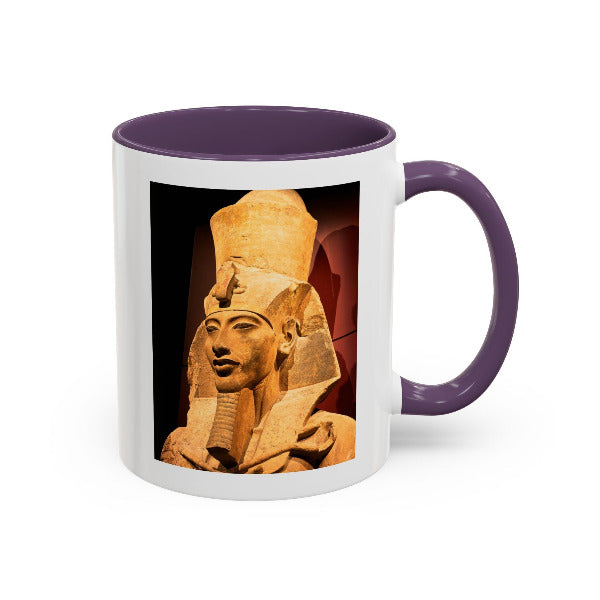


FAQs
Is the print framed?
The print is unframed so you can choose a frame that matches your space.
How long does shipping take?
Our products are made to order and custom printed just for you! Production takes 10–14 days, and once ready, they ship from the USA with tracking provided.
What if I don’t love it?
You’re covered by our 30-Day Money-Back Guarantee. Return it for a full refund—no questions asked.
























